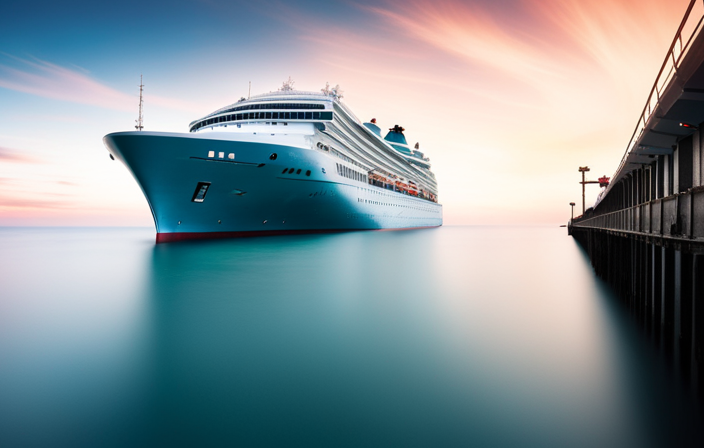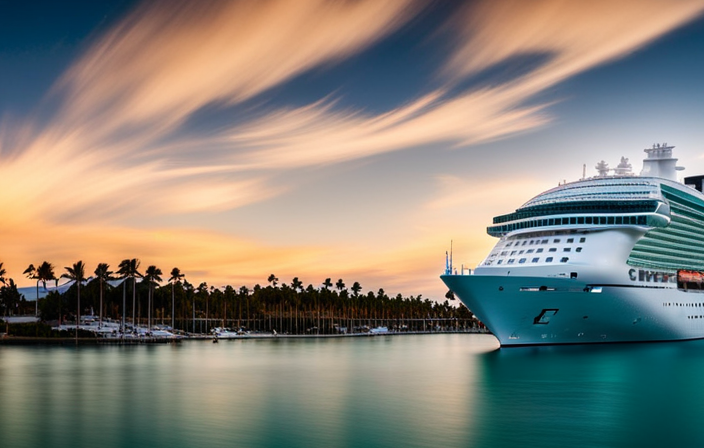As a Magic: The Gathering player myself, I was surprised to discover that the powerful card, Treasure Cruise, has been banned in tournament play. This card, which allows players to draw three cards at the cost of just one blue mana by utilizing the delve mechanic to get rid of unnecessary cards in their graveyard, had become an essential element in many decks.
Its impact on gameplay was undeniable, with players able to refill their hands and gain a significant advantage over their opponents. The rise of the ‘Delve’ mechanic only fueled the dominance of Treasure Cruise, as it became easier and easier to cast for its reduced mana cost.
However, after careful consideration, the decision was made to ban Treasure Cruise in order to restore balance and fairness to the game’s meta.
In this article, we will explore why Treasure Cruise was banned, how it affected gameplay strategies and deck-building strategies, and the reactions from both players and the Magic community as a whole.
Key Takeaways
- The banning of Treasure Cruise led to mixed player reactions, with some disappointed and others relieved.
- The ban had a significant impact on the metagame and top-tier decks, leading to the emergence of new strategies and different decks taking center stage.
- The banning highlighted the importance of careful card design and balance in maintaining a healthy and diverse metagame, as no card is safe from potential banning.
- The banning of Treasure Cruise also raised concerns about the dangers of strong draw spells and the need for alternative card draw mechanics to promote strategic decision-making and avoid metagame domination.
Introduction to Magic: The Gathering and the concept of banned cards
Let’s dive into the captivating world of Magic: The Gathering and explore the fascinating concept of banned cards!
In Magic: The Gathering, banned cards are those that have been deemed too powerful or disruptive to the game’s balance and competitive play. These cards can have a significant impact on gameplay, often creating an unfair advantage for players who include them in their decks.
Concerns raised by players about the impact of certain cards on the game’s meta and overall enjoyment led to a decision-making process by Wizards of the Coast, the game’s publisher. Reactions from players vary when a card is banned, with some supporting the decision while others feel it limits creativity in deck building.
The banning of a card like Treasure Cruise sparked discussions about future card design and how to maintain a healthy playing environment.
Now let’s move on to an overview of Treasure Cruise and its mechanics.
Overview of Treasure Cruise and its mechanics
At the heart of its design, Treasure Cruise allowed players to delve into the depths of their decks and unearth a wealth of untapped potential.
As a card in Magic: The Gathering, Treasure Cruise was a blue instant that had the ability to draw three cards for just one blue mana and seven other cards exiled from the player’s graveyard. This mechanic, known as Delve, made it possible to cast Treasure Cruise for a significantly reduced cost.
Many players found this card to be incredibly powerful, especially in combination with other cards that could easily fill up their graveyard. Strategies for playing Treasure Cruise often involved using spells or abilities that filled up the graveyard quickly so that it could be cast early on in the game.
Transitioning into the subsequent section about ‘the power level of treasure cruise and its impact on gameplay,’ we will explore how this strong mechanic led to its eventual banning.
The power level of Treasure Cruise and its impact on gameplay
The sheer potency of Treasure Cruise and its influence on gameplay cannot be understated. It revolutionized the way players approached deck construction and strategic decision-making. The card’s ability to draw three cards for just one blue mana, combined with its ‘delve’ mechanic, made it an incredibly efficient and powerful card in many formats.
This led to a significant impact on card prices, as Treasure Cruise quickly became a staple in numerous decks. Its dominance was particularly felt in tournament formats like Modern and Legacy, where players sought to maximize their chances of drawing into powerful spells by playing a high number of cheap instants and sorceries.
The rise of the ‘delve’ mechanic only further enhanced the synergy with Treasure Cruise, creating even more opportunities for explosive plays.
The rise of the "Delve" mechanic and its synergy with Treasure Cruise
The rise of the ‘Delve’ mechanic introduced in Khans of Tarkir revolutionized gameplay by allowing players to exile cards from their graveyard to reduce a spell’s mana cost. This mechanic proved to be incredibly powerful, particularly when combined with card draw spells like Treasure Cruise. It not only provided extra fuel for delve but also allowed players to dig deeper into their decks, finding answers or threats more efficiently than ever before.
The impact of delve on other banned cards cannot be ignored either; it enabled strategies that were simply too strong for competitive play. Transitioning into the subsequent section about the dominance of Treasure Cruise in competitive play, this combination created a powerhouse that demanded attention and ultimately led to its banishment from tournaments.
The dominance of Treasure Cruise in competitive play
Get ready to set sail on a wave of success as you ride the dominance of Treasure Cruise in competitive play. This card becomes your trusty compass guiding you towards victory.
The impact of Treasure Cruise on deck diversity cannot be understated. Its ability to draw three cards for just one blue mana and delve away unwanted cards from the graveyard made it an instant staple in many decks across various formats.
This led to a meta defined by the presence of Treasure Cruise, with players scrambling to find ways to counter or replicate its power. However, concerns raised by the Magic community about the card’s balance ultimately led to its ban in multiple formats.
This left players in search for a replacement that could provide similar card advantage without overshadowing other strategies.
Concerns raised by the Magic community about the card’s balance
Amidst the excitement surrounding Treasure Cruise, players couldn’t help but voice their concerns about the card’s overpowering presence in competitive play. The Magic community backlash was strong, with many expressing worry over the long-term implications of such a dominant card.
- Some feared that Treasure Cruise would create an unhealthy metagame, where every deck would simply revolve around it.
- Others worried that the card would decrease diversity in deck building, as players felt compelled to include it in their decks to remain competitive.
- Many argued that Treasure Cruise was simply too powerful for its cost, providing too much card advantage and making other draw spells obsolete.
- There were also concerns about the card’s ability to quickly refill a player’s hand and maintain constant pressure on opponents.
- Lastly, some players raised questions about the impact of Treasure Cruise on tournament formats and whether it would limit strategic decision-making.
This community backlash prompted Wizards of the Coast to carefully consider the decision-making process behind banning Treasure Cruise.
The decision-making process behind banning Treasure Cruise
The deliberations that led to the prohibition of Treasure Cruise were filled with intense debates and careful considerations by the Wizards of the Coast. The decision-making process involved analyzing its impact on gameplay and addressing concerns raised by the Magic community regarding its balance.
The card’s ability to draw three cards for a low mana cost made it highly efficient, leading to an imbalance in gameplay dynamics. Its inclusion in decks had become almost mandatory, limiting diversity and stifling creativity in deck-building strategies.
By banning Treasure Cruise, Wizards aimed to restore balance and promote a healthier metagame where different strategies could thrive. This decision has had a significant impact on the game’s meta and deck-building strategies, forcing players to explore other options and adapt their playstyles accordingly.
Moving into the subsequent section about ‘the impact of the ban on the game’s meta and deck-building strategies’, players were now faced with new challenges in constructing competitive decks.
The impact of the ban on the game’s meta and deck-building strategies
The banning of Treasure Cruise had a significant impact on the game’s metagame and deck-building strategies. Prior to the ban, blue-based decks were dominant due to the power and efficiency of Treasure Cruise. However, with its removal from competitive play, players had to reevaluate their deck choices and find new ways to remain competitive.
This led to a shift in the meta towards other colors and archetypes that were previously overshadowed by blue. Decks became more diverse and balanced as players explored different options without relying heavily on card advantage generated by Treasure Cruise. As a result, the metagame became more dynamic and engaging for players.
Transitioning into reactions from players and the magic community to the banning…
Reactions from players and the Magic community to the banning
Players and the Magic community were taken aback by the ban, sparking a flurry of discussions and debates about the future of competitive play.
Reactions from players ranged from disappointment to relief, depending on their reliance on Treasure Cruise in their decks. Some players expressed concern over the impact on the metagame, as Treasure Cruise was a staple in many top-tier decks. Others saw it as an opportunity for new strategies to emerge and for different decks to take center stage.
The banning forced players to reconsider their deck-building choices and adapt to a changing landscape. It also highlighted the need for careful card design and balance in order to maintain a healthy competitive environment. With this ban, players learned that no card is safe from potential banning if it becomes too dominant or warps the metagame excessively.
Lessons learned from the banning of Treasure Cruise and its implications for future card design
One interesting statistic to note is that the banning of Treasure Cruise led to a significant decrease in the average number of blue decks played in competitive tournaments. This banning served as a powerful lesson for both players and card designers about the potential dangers of cards with high power levels and low mana costs. The implications for future card design are clear – a closer examination of mana costs, power levels, and overall balance will be necessary to ensure a healthier and more diverse metagame. The table below highlights some key takeaways from the banning of Treasure Cruise:
| Lessons Learned | Future Card Design Implications |
|---|---|
| Power level should be carefully balanced with mana cost | Avoid creating cards that can easily dominate the metagame |
| Strong draw spells can quickly become problematic | Consider alternative card draw mechanics that promote strategic decision-making |
| Diversity and variety in deck archetypes is crucial | Encourage diversity by designing cards that enable multiple strategies |
By reflecting on these lessons, Magic: The Gathering can continue to evolve and create an enjoyable playing experience for all players.
Frequently Asked Questions
How does the banning of Treasure Cruise affect other cards in the Delve mechanic?
The banning of Treasure Cruise greatly impacts graveyard centric strategies as it was a powerful enabler for those decks. It also has the potential to change the metagame by forcing players to explore other options and adapt their strategies.
Are there any alternatives to Treasure Cruise that players can use in their decks?
Players can find similar card draw effects in their decks with alternatives like Ancestral Vision and Dig Through Time. The banning of Treasure Cruise affects the overall strategy and gameplay by reducing the power level of delve mechanics.
Will the ban of Treasure Cruise lead to a more diverse metagame in competitive play?
The ban on Treasure Cruise will have a significant impact on competitive deck building strategies. It could potentially lead to shifts in the metagame and player preferences, as they search for new alternatives to fill the void left by this banned card.
How does the banning of Treasure Cruise reflect the overall balance of Magic: The Gathering?
The banning of Treasure Cruise reflects the overall balance of Magic: The Gathering by addressing its dominance in competitive play. Alongside Treasure Cruise, Dig Through Time was also banned. After the ban, the price of Treasure Cruise dropped significantly in the secondary market.
What lessons can be learned from the banning of Treasure Cruise to prevent similar issues in future card designs?
To prevent similar issues in future card designs, it is crucial to balance card power and design for long term playability. This ensures a healthy and enjoyable game environment while avoiding the need for banning cards like Treasure Cruise.
Conclusion
In conclusion, the banning of Treasure Cruise in Magic: The Gathering has had a profound impact on the game’s meta and deck-building strategies.
Treasure Cruise’s dominance was overwhelming and left little room for other strategies to flourish.
However, with its banishment from competitive play, the waters have calmed and new possibilities have emerged.
This decision serves as a reminder that even the mightiest treasures can be washed away by the tide of balance and fairness.
Claire, a creative soul with an unquenchable thirst for storytelling, is an integral part of the Voyager Info team. As a dedicated writer, she weaves captivating narratives that transport readers to enchanting cruise destinations and beyond.
Claire’s love affair with writing began at an early age when she discovered the magic of words and their ability to craft worlds and emotions. Her innate curiosity led her to explore various literary genres, but it was travel writing that truly captured her heart. Drawing inspiration from her own globetrotting adventures and encounters with diverse cultures, Claire embarked on a journey to become a travel writer par excellence.











